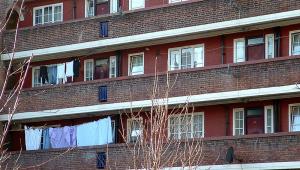The long awaited results of the government’s Spending Review have now been revealed. As is always the case, it contains a lot of numbers, which can hide crucial details. So, I’ve set myself the challenge to explain the key points for health and social with just four numbers: two, four, six and eight.
Eight
The NHS’s Five Year Forward View states that, if the NHS in England can achieve unprecedented efficiency growth over the next five years, it can meet the demands from a growing and ageing population with an extra £8bn by 2020/21. In response, the government announced it would match this request. With many public service areas seeing a real-terms fall in the Spending Review, protection for the NHS is very welcome. However, the details are concerning. The government has changed its definition of what constitutes the NHS budget, down from the total budget for the Department of Health which they used in the last parliament, to the budget for NHS England. This excludes areas of crucial health spending such as public health and staff training. While it may seem like a technicality, this risks areas of patient care and urgently needed investment in prevention to reduce demand. So it is true, and welcome, that the spending review means an extra £8bn for direct NHS services. But under the previous definition for the NHS, the budget is rising by less, as discussed later.
Six
NHS England chief executive Simon Stevens has also made it clear that, for the health service to achieve the Forward View plan, the extra investment needs to be front loaded. Again, the government has met this request, but the number it provides is slightly misleading. The announcement stated that the NHS budget would rise by £6bn next year, but again this is just for NHS England. And it is from a 2014/15 baseline so includes the additional money invested this year as well. So the actual increase for next year? You guessed it…
Four
NHS England’s budget will rise by just under £4bn next year, reconfirming the front-loading of the additional funding. But four has other important implications from the Spending Review. Due to the redefinition of NHS spending mentioned above, health spending as a whole (i.e. the old definition for the NHS) will rise by just over £4bn by 2020/21. This is still a real-terms increase, but much lower than we at the Health Foundation projected in our recent report. This means that wider areas of health spending are facing a fall in real terms budgets similar to other areas of public spending.
Four is also an important number for adult social care. By the end of the spending review period we expect pressures on adult social care to rise by around £4bn, from a combination of the growing and ageing population, rising numbers of people living with long-term conditions, and the additional costs due to the new minimum wage.
Two
The government has shown understanding of the pressures facing social care, and the need for additional investment. It is allowing local authorities to raise council tax by an extra 2% a year above their existing threshold, if they spend the extra revenue on social care services. If all LAs choose to do this, it could raise close to £2bn. Combined with extra money from central government for the Better Care Fund from 2017, this would represent a much-needed increase in funding for adult social care. This is well above our recent projections and is clearly welcome news, but comes with some hefty caveats. For example, due to the variation in current revenue received by local authorities, the amount that could be raised by the 2% varies. Local authorities with the highest demand for publicly funded social care will be those whose population has more lower-earners (due to means testing). They are also often those who would raise less income, and may also be less willing to increase the tax rate for their relatively poorer population. So there is a strong risk that the areas with the highest need for adult social care will be those with the lowest ability to raise extra funds.
Also, projected costs are still rising faster than the possible funding available. At best this could leave a funding gap for adult social care in 2019/20 of almost £1bn. Okay, so I failed to stick to my challenge of four numbers. But if you only remember one number, make it this £1bn. Social care funding has fallen substantially over the last five years, leading to a high rate of unmet need. The recognition of this in the Spending Review is timely, but unfortunately even this extra money is unlikely to prevent even more people coping in silent misery. If unmet need is to be fully addressed, the social care system in England will need a full and comprehensive review.
NB: all figure are in 2015/16 prices.





















